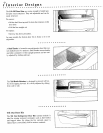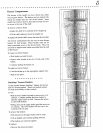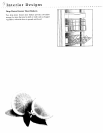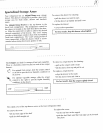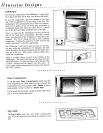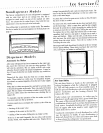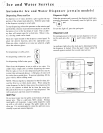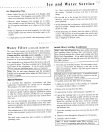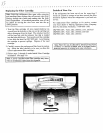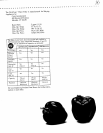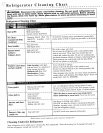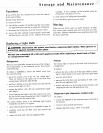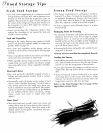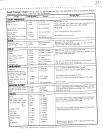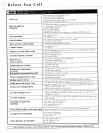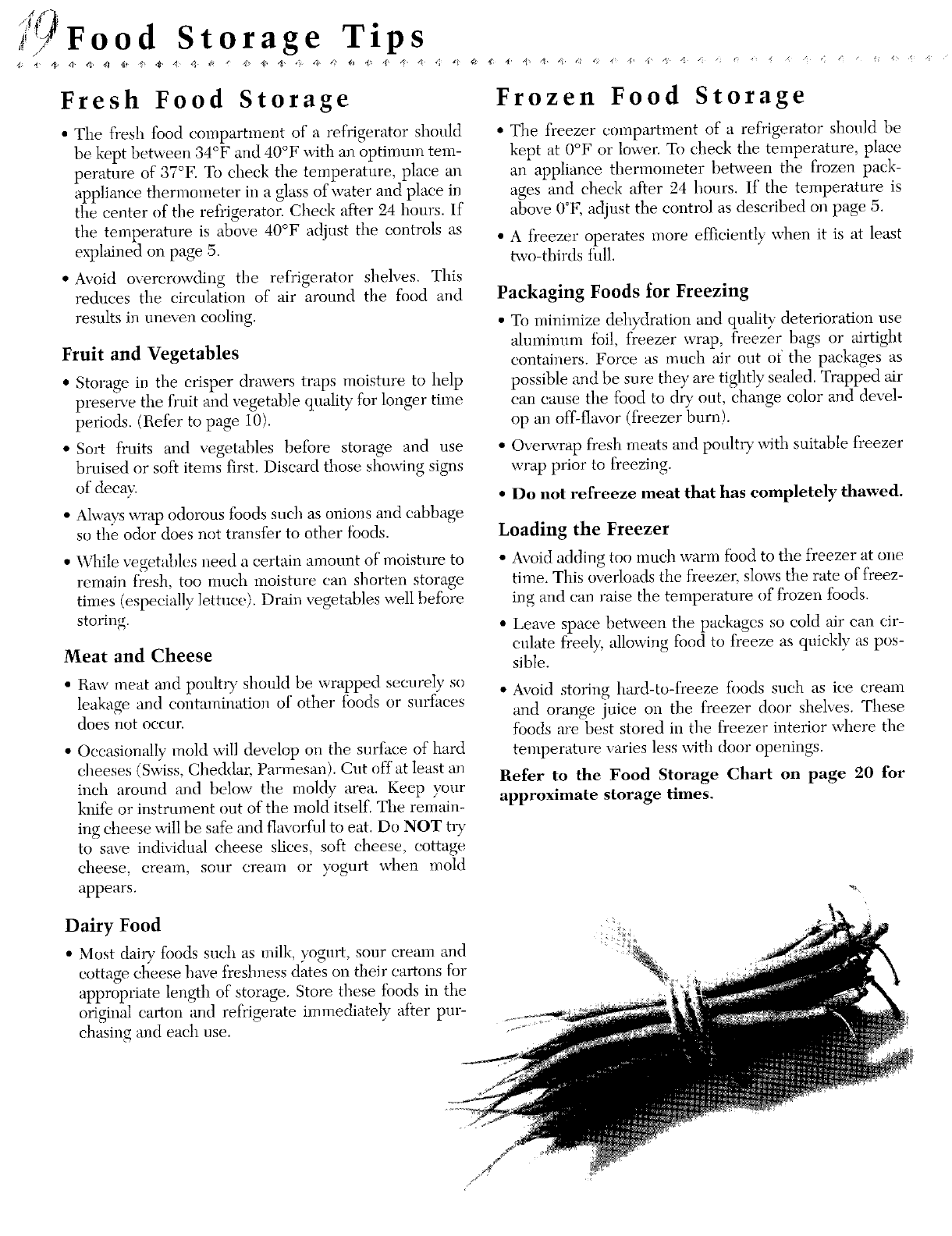
Foo d Storage Tips
...... .... ............•..........
Fresh Food Storage Frozen Food Storage
• The fresh food compartment of a refrigerator should * The freezer compartment of a refrigerator should be
be kept between 34°F and 40°F with an optimum ten> kept at 0°F or lower. To check the temperature, place
peratnre of 37°E To check the temperature, place an an appliance thermometer bep,veen the frozen pack-
appliance thermometer in a glass of water and place in ages and check after 24 honrs. If the temperature is
the center of the refrigerator. Check after 24 hours. If above 0°K adjust the control as described on page 5.
the temperature is above 40°F adjust the controls as • A freezer operates more efficiently when it is at least
explained on page 5. V,vo-thirds full.
• Avoid oxererowding the refrigerator shelves. This
reduces the circulation of air around the fuod and Packaging Foods for Freezing
results in uneven cooling. • To minimize dehydration and qnality deterioration use
ahnninum foil, freezer wrap, freezer bags or airtight
Fruit and Vegetables containers. Force as much air out or' the packages as
• Storage in the crisper drawers traps moisture to help possible and be sure they are tightly sealed. Trapped air
preserve the fruit and vegetable qnality for longer time can cause the food to dD' out, change color and devel-
periods. (Refer to page 10). op an off-flavor (freezer burn).
• Sort fruits and vegetables before storage and use • Ovepa,rap fresh meats and poultD _with suitable freezer
bruised or soft items first. Discard those showing signs wrap prior to freezing.
of decay. * Do not refreeze meat that has eompletely thawed.
• Always wrap odorous foods such as onions and cabbage
so the odor does not transfer to other tbods. Loading the Freezer
• While vegetables need a eertain amount of moisture to • Avoid adding too much warm food to the freezer at oue
remain fresh, too nmch moisture can shorten storage time. This overloads the freezer, slows the rate of freez-
times (especially lettuce). Drain vegetables well before ing and can raise the temperature of frozen foods.
storing. • Leave space between the packages so cold air can cir-
culate freely,, allowing food to freeze as quickly as pos-
Meat and Cheese sible.
• Raw meat m-ldpoult U should be wrapped securely so ,, Avoid storing hard-to-freeze foods such as ice cream
leakage and contamination of other foods or surfaces and orange juice on the freezer door shelves. These
does not occur, foods are best stored in the freezer interior where the
• Occasionally mold will develop on the surface of hard temperature varies less with door openings.
cheeses (Swiss, Cheddar, Parmesan). Cnt off at least an Refer to the Food Storage Chart on page 20 for
inch around and below the moldy area. Keep your approximate storage times.
knife or instrument out of the mold itself. The remain-
ing cheese will be safe and flavorfnl to eat. Do NOT tlT
to save indMdual cheese slices, soft cheese, cottage
cheese, cream, sour cream or yogurt when mold
appears. -,
Dairy Food
• Most daiU foods such as milk, yogurt, sour cream and :
cottage cheese have freshness dates on their cartons for
appropriate length of storage. Store these tbods in the
original carton and refrigerate immediately a_er pur-
chasing and each use.



